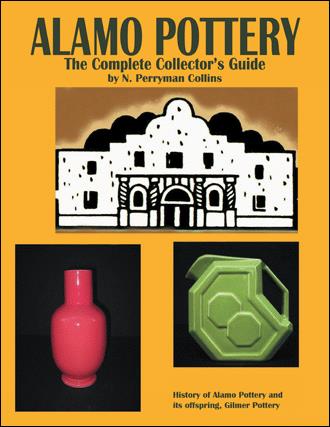On a visit to the Texas Hill Country in 1999, my wife and I and went into an antique store in Boerne. Two pieces of pottery sat side by side on the same shelf – both advertised as Alamo Pottery. One piece had “Alamo Pottery” clearly stamped on the bottom; the other was unmarked. I knew for certain that the unmarked piece was not Alamo. The shopkeeper had made an understandable error. I had been collecting information on Alamo Pottery since 1985. I, too, would have identified both pieces as Alamo prior to my research. I had hoped one day to piece together Alamo’s untold story. The experience in Boerne spurred me to act.
I purchased my first pieces of Alamo pottery in 1985. The lack of information, other than the identifying stamp on the bottom of each piece, increased my curiosity about the pottery. In time, I developed a rough catalog based on the model numbers of the marked pieces that I had collected. During this time, I also purchased several pieces of unmarked pottery that I thought were Alamo. When I noticed that the model numbers of the unmarked pieces were significantly different from those that were clearly Alamo, I realized that I was dealing with two different potteries. In time, I learned that those unmarked pieces were Gilmer pottery. I then knew that any discussion of Alamo would have to include information on Gilmer pottery.
The following story of Alamo Pottery is based on the compilation of information gathered from various sources. I have made every effort to be as factual as possible. My initial research included interviews with those principals of the company I was able to locate: Leroy Miller, Frank Price, Carlton “Jake” Rowe, Richard Potter, George Retherford and Oscar Arnim and his sister, Alice (not an employee), who helped me with some of Arnim’s information after his health failed. Much later, I was able to track down Mike Bali, Harry Mueller, James Richter, and Jimmy Rogers, all of whom were at Alamo Pottery at the time it was sold.
The demand for mid-century modern American decorative arts, such as Alamo Pottery, has increased as more people are collecting these items. A clear definition and understanding of Alamo Pottery will benefit collectors, dealers, owners of antique stores, and anyone who has an interest in Texas potteries as well as Texas history.
Alamo Pottery is more than a Texas pottery that flashed onto the scene in mid-century. It is about a man with a dream who convinced others to step into that dream. It is about the trials and hard work, failure and success of those men who had the courage to take the risk. It is the record of work left behind by these men. Alamo pottery, scattered across the country, appears in collections, antique shops, flea markets and on the Internet. To have a piece of this pottery is to have a slice of Texas history and a small window into the lives of those who produced it.


